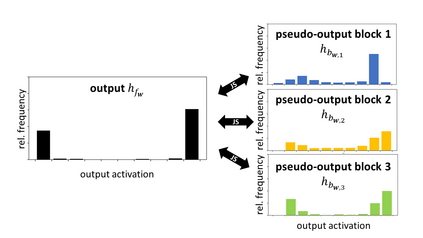Training predictive models on datasets from multiple sources is a common, yet challenging setup in applied machine learning. Even though model interpretation has attracted more attention in recent years, many modeling approaches still focus mainly on performance. To further improve the interpretability of machine learning models, we suggest the adoption of concepts and tools from the well-established framework of component based multiblock analysis, also known as chemometrics. Nevertheless, artificial neural networks provide greater flexibility in model architecture and thus, often deliver superior predictive performance. In this study, we propose a setup to transfer the concepts of component based statistical models, including multiblock variants of principal component regression and partial least squares regression, to neural network architectures. Thereby, we combine the flexibility of neural networks with the concepts for interpreting block relevance in multiblock methods. In two use cases we demonstrate how the concept can be implemented in practice, and compare it to both common feed-forward neural networks without blocks, as well as statistical component based multiblock methods. Our results underline that multiblock networks allow for basic model interpretation while matching the performance of ordinary feed-forward neural networks.
翻译:从多种来源获得的数据集的培训预测模型是常见的,但在应用机器学习中却具有挑战性。尽管模型解释近年来吸引了更多的注意力,但许多模型方法仍然主要侧重于性能。为了进一步改善机器学习模型的解释性,我们建议采用基于多区块分析(又称色度计)的既定框架的概念和工具。然而,人工神经网络在模型结构中提供了更大的灵活性,因而往往提供优异的预测性能。在本研究中,我们建议设置一个基于组成部分的统计模型的概念,包括主要组成部分回归和部分最小方块回归的多块变量,转移到神经网络结构。我们据此将神经网络的灵活性与解释多区块方法中块关联性的概念结合起来。在两个使用的例子中,我们演示了这一概念如何在实践中得到实施,并将它与没有区块的通用进取向神经网络以及基于统计组成部分的多区块方法进行比较。我们的结果强调,多区块网络允许基本模型解释,同时匹配普通进向神经网络的性能。















